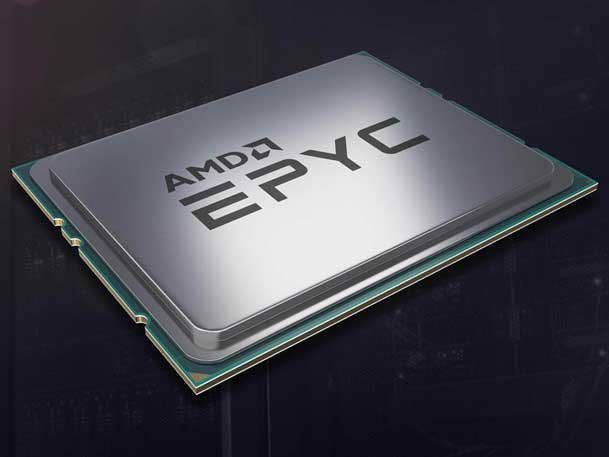AMD Continues To Steal Top 500 Supercomputer Share From Intel
AMD now powers 73 of the top 500 supercomputers, according to the new fall 2021 list released Monday by the eponymous Top500 organization. That’s more than triple the 21 clusters it powered a year ago, underlining the chipmaker’s ascension in the high-performance computing space.

AMD continues to steal share away from Intel in the list of the world’s 500 fastest supercomputers, even as its top rival added more new clusters in the past few months.
Santa Clara, Calif.-based AMD now powers 73 of the top 500 supercomputers, according to the new fall 2021 list released Monday by the eponymous Top500 organization. That’s up from the 49 clusters it powered in Top500’s summer 2021 list and more than triple the 21 clusters it powered a year ago, underlining the chipmaker’s ascension in the high-performance computing space. AMD’s CPU technology was also present in one system using Hygon Dhyana processors from a joint venture.
[Related: Xilinx’s New Alveo HPC Accelerator Is Its ‘Most Powerful’ Yet]
Out of the 70 new clusters in the fall 2021 list, Intel added 42 clusters versus AMD’s 28, with no other CPU vendors present in the new supercomputers, according to a CRN analysis. But despite adding more clusters, Intel’s share of top 500 supercomputers declined to 408, down from the 431 clusters it had in the summer 2021 list and down even further from the 459 it powered a year ago.
AMD’s momentum in the HPC space was represented in other ways, with the chipmaker’s EPYC CPUs now powering four of the top 10 supercomputers and eight of the top 20. Intel, on the other hand, powers only two of the top 10 supercomputers and five of the top 20.
Helping drive AMD’s growth in the Top500 list was the chipmaker’s new third-generation EPYC CPUs (code-named Milan), which is now represented in 17 clusters after formally launching in March. There has been less uptake with Intel’s competing product line, the third-generation Xeon Scalable CPUs, (code-named Ice Lake), which only accounted for 10 clusters on the list after launching in April.
As for other CPU vendors, the share of clusters using Fujitsu’s Arm-based CPUs remained unchanged from the summer at five total clusters. There was only one other system using Arm-based CPUs, Marvell’s discontinued ThunderX2, which was also the same as the summer 2021 list.
There also remained one system using Shenwei CPUs from China’s Jiangnan Computing Lab and four clusters using the NEC Vector Engine processors. What did change was the number of clusters using IBM’s Power CPUs: seven, which was down one from the summer.
As for accelerators and co-processors, Nvidia saw its share of GPUs in the world’s fastest supercomputers jump to 143 in the fall 2021 list. That represents somewhat of a bounce back for Nvidia, whose share dipped to 138 in the summer 2021 list after reaching 141 a year ago. The company’s GPUs are now represented in seven of the top 10 clusters and 14 of the top 20.
AMD, on the other hand, continued to only have one system on the list using its Instinct GPUs, the same one that has appeared in several previous lists. That is expected to change when new clusters go online using the chipmaker’s new Instinct MI250 GPUs, which includes the U.S. Department of Energy’s Frontier exascale supercomputer.
Dominic Daninger, vice president of Nor-Tech, a Burnsville, Minn.-based HPC system integrator, told CRN that while his customers remain interested in Intel, there has been increasing interest in AMD.
“It’s that whole price-price performance curve—how much performance you’re getting for a buck—and AMD is a pretty good competitor there,” he said.
The problem is, while Nor-Tech is working with AMD on some key HPC projects for the company, supply continues to be a limiting factor for new opportunities, according to Daninger.
“They’re struggling to keep up with demand, like most of us,” he said.
Eliot Eshelman, vice president of strategic accounts and HPC initiatives at Microway, a Plymouth, Mass.-based HPC system integrator, told CRN that the ongoing global chip shortage is changing the way customers decide which processors to use, and that is having a more negative impact on AMD because Intel is currently able to deliver parts faster.
“It’s no longer going to be as simple as ‘technology side-by-side, here’s our decision,’ or ‘cost effectiveness side-by-side, here’s our decision.’ There’s another denominator involved, which is how many months do you have to wait to get this? It’s quite a few months in a lot of cases,” he said.